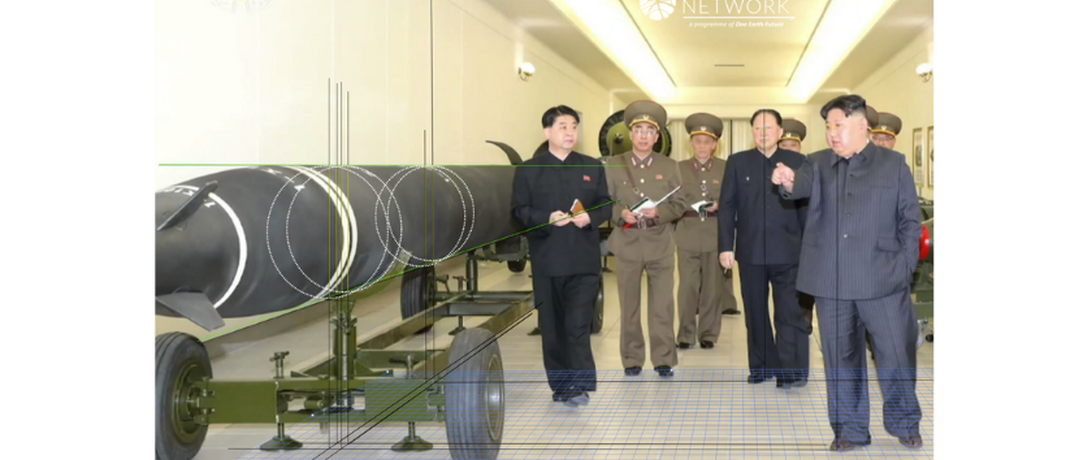
Key Takeaways
- The DPRK nuclear warheads showcased before 2023 have a maximum diameter of around 600 mm and were likely intended to be delivered by ballistic missiles.
- The Hwasan-31 nuclear warhead, newly revealed in late March 2023, has a reduced diameter of around 460 mm, suggesting advances in miniaturization.
- Assuming the Hwasan-31 has not been tested before, the DPRK is likely to conduct a seventh nuclear test to validate its parameters before it enters full production, in furtherance of DPRK leader Kim Jong Un's order for exponential expansion of the State's nuclear arsenal.
Introduction
On 27 March 2023, DPRK leader Kim Jong Un reportedly inspected the country's nuclear weapons. A nuclear warhead called "Hwasan-31" - intended to be used for several different nuclear delivery systems - was revealed during this inspection.
The 27 March inspection was possibly the fourth known occasion in which a DPRK nuclear weapon was shown to the outside world. The images released offer more data that can be used in estimating the size of the DPRK's nuclear warheads.
This article presents estimates of the size of all DPRK nuclear warheads showcased to date, including the most recently displayed Hwasan-31, with the aim to provide more data for understanding the DPRK's nuclear weapons development and programme.
Methodology
Mensuration of ground photos is a technique used to estimate the dimensions of objects in photos, and in this case can be utilized to estimate the size of the nuclear warheads shown in DPRK State media images. The method used for the mensuration is to (1) find suitable references (objects of a known size that can be used for measuring the size of another object) and (2) find a relatively suitable plane for measurement so that errors caused by perspective distortion can be minimized. Less accurate references, photos taken with unfavourable angles, low resolution images or distortion caused by camera lenses all result in higher margins of error. Sometimes conversion of references, for example, measuring the size of an object in one photo so that the same object could be used as a reference in another photo, can be used. Such conversions also increase the inaccuracies of the measurement due to accumulation of errors.
The measurements are made on the basis of the assumption that all nuclear warheads or their mockups presented by the DPRK State media represent the real size of the physical nuclear packages used by the DPRK.
Summary of Mensuration Results
As information on nuclear weapons is closely controlled, the images of nuclear warheads released by the DPRK for propaganda purposes are not necessarily amenable to mensuration. Measurement confidence levels are impacted by (1) the quality of the reference for the purpose of measurement and (2) how aligned a reference is placed for the purpose of measurement in relation to the object being measured. Therefore, the measurements of the DPRK's nuclear weapons, as listed in Table 1 below, do not all share the same level of confidence. [1]
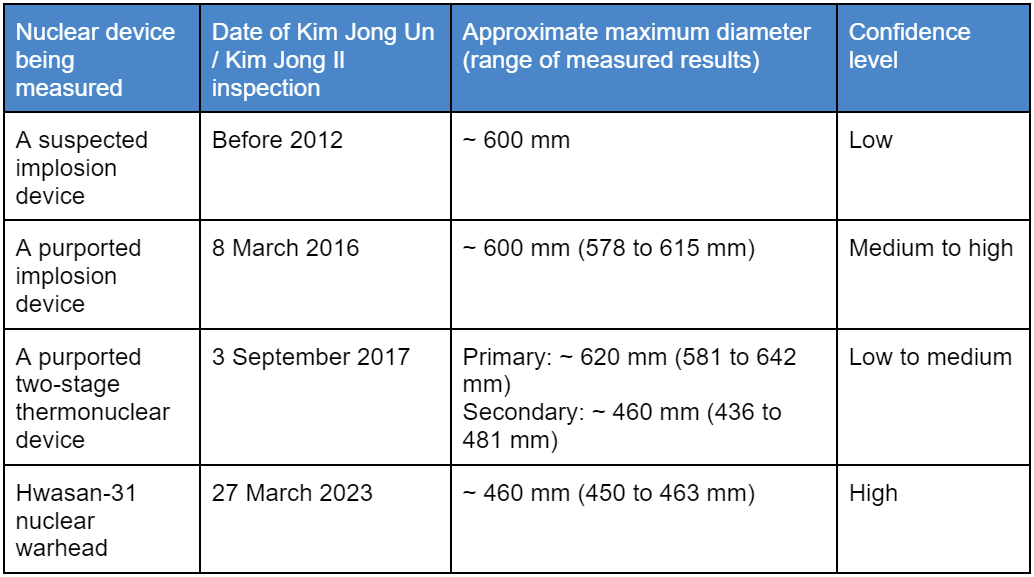
A more detailed explanation of each measurement made for this article is available in Appendix I.
Implications
In a previous ONN publication on the six nuclear tests conducted by the DPRK to date [2], it was assessed that by 2017 the DPRK's nuclear weapon programme had: (1) tested a relatively compact device; (2) increased the yield-to-weight ratio of its nuclear device; and (3) detonated a two-stage thermonuclear device.
The measurements made for this report suggest that between 2006 and 2017, the size of the DPRK's atomic bombs, or the size of the primary in the case of the sixth nuclear test, has remained largely unchanged. While this article focuses on the measurement of the nuclear devices showcased by the DPRK, the measured size of these devices are generally compatible with the size of reentry vehicles of the DPRK's ballistic missiles. For example, the body diameter of the Hwasong-7 (Rodong) ballistic missile is ~125 cm. [3] Longer-range missiles, such as the Hwasong-12, have a wider body. A fission bomb with a diameter of around 600 mm would be able to fit in a re-entry vehicle on top of these missiles.
However, the Hwasan-31 nuclear warhead, newly revealed in late March 2023, has a significantly smaller diameter of around 460 mm, suggesting further miniaturization. The reduced size allows the warhead to be carried by a wider range of weapon systems, providing a basis for potentially more widespread use on the battlefield in accordance with Kim Jong Un's instruction to apply the State's war deterrence to control and manage the security on the Korean peninsula. [4]
The Hwasan-31's yield potential is unclear. The DPRK State media has claimed that missiles that are supposed to carry the Hwasan-31 warheads have simulated airburst at altitudes of 500, 600 and 800 metres, respectively. [5] For comparison, in 1966, China detonated a 12 kt atomic bomb, delivered over the target area by a DF-2A ballistic missile, at an altitude of 569 metres.[6] The similar detonation altitude may suggest that the designed yield of the Hwasan-31 is also in the 10 kt class, though the detonation altitude could be associated with the nature of the intended targets. [7]
If the Hwasan-31 nuclear warhead represents a new design that has not been tested before, the DPRK is likely to conduct a seventh nuclear test to validate its performance before it enters production, in furtherance of DPRK leader Kim Jong Un's orders for the exponential expansion of the State's nuclear arsenal.[8] Moreover, if the Hwasan-31 has been previously tested and validated, it may already be in production.
Appendix I: Mensuration Process
1. Suspected Implosion Device (before 2012)
In December 2017, KCTV reported on a meeting in celebration of the development of the State's nuclear armed forces. In that programme, KCTV showed Kim Jong Il inspecting a spherical object (Figure 1) hanging on one of the walls of the meeting venue. Considering the main theme of the meeting, and that other photos displayed during the meeting were relevant to the State’s missile and nuclear weapon programmes (Figure 2), the photo might depict Kim Jong Il’s inspection of a purported implosion device. [9]
This photo may be the only publicly-available image of an DPRK implosion device that was taken before the Kim Jong Un era. Thus, this picture is used as a possible reference for the size of the DPRK's early implosion devices. However, due to the small size of the relevant part of the video, only a rough estimate of the size of the spherical object, using the height of Kim Jong Il as reference, was made (Figure 3).
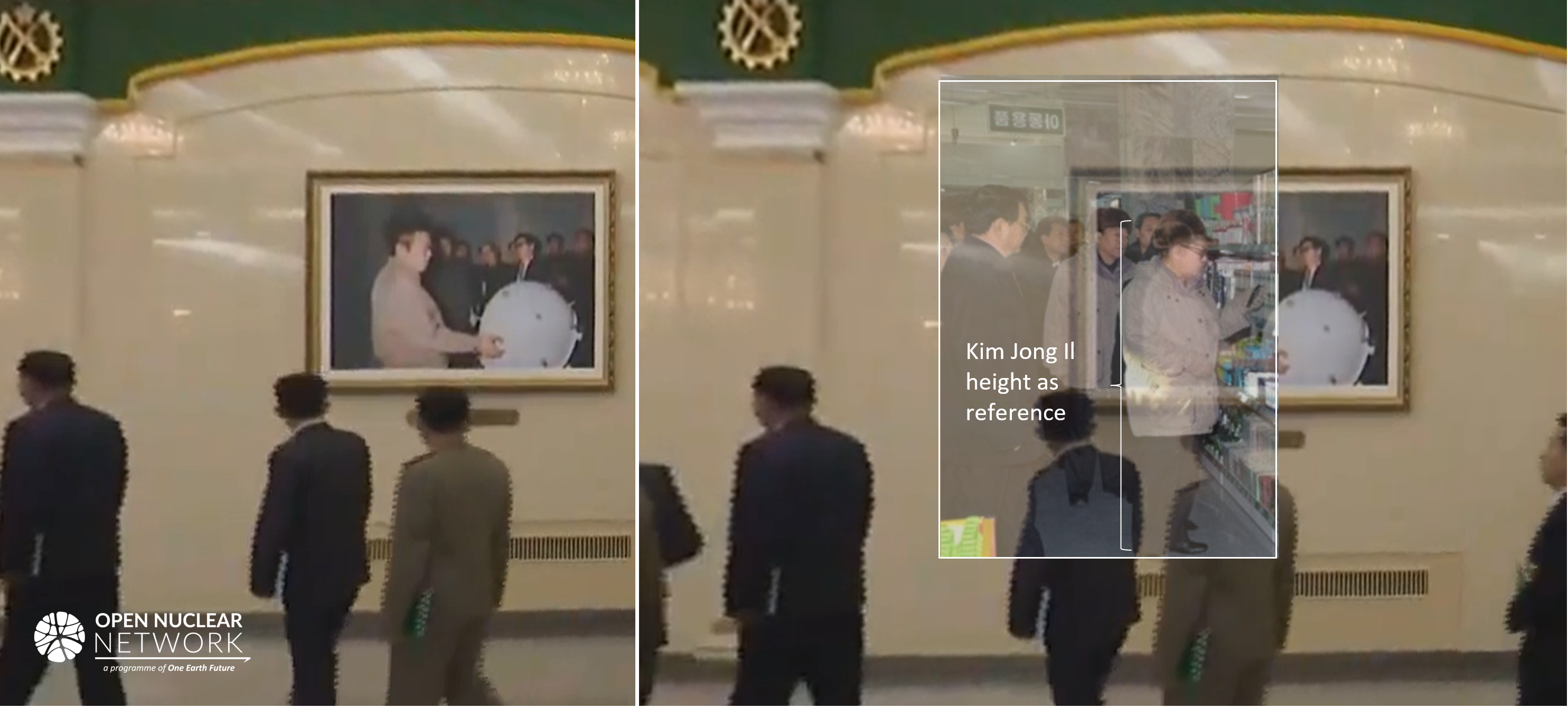
2. Purported Implosion Device (2016)
The DPRK unambiguously showcased its nuclear weapons for the first time in March 2016, when Kim Jong Un conducted his first publicly-reported inspection of the DPRK's nuclear weapons, which took place between the State’s fourth and fifth nuclear tests in January and September 2016, respectively. [15]
During this visit, Kim inspected a purported implosion device with visible explosive lenses, and he reportedly said that "it was gratifying to see the nuclear warheads with the Korean-style structure of mixed charge adequate for prompt thermo-nuclear reaction". [16]
Measurement 1
To measure the diameter of this device, the first reference used is the face length (length from eyes to chin) of Hong Sung Mu, a key figure in the DPRK's nuclear weapon development and currently the first vice department director of the Central Committee of the Workers' Party of Korea (Figure 4).
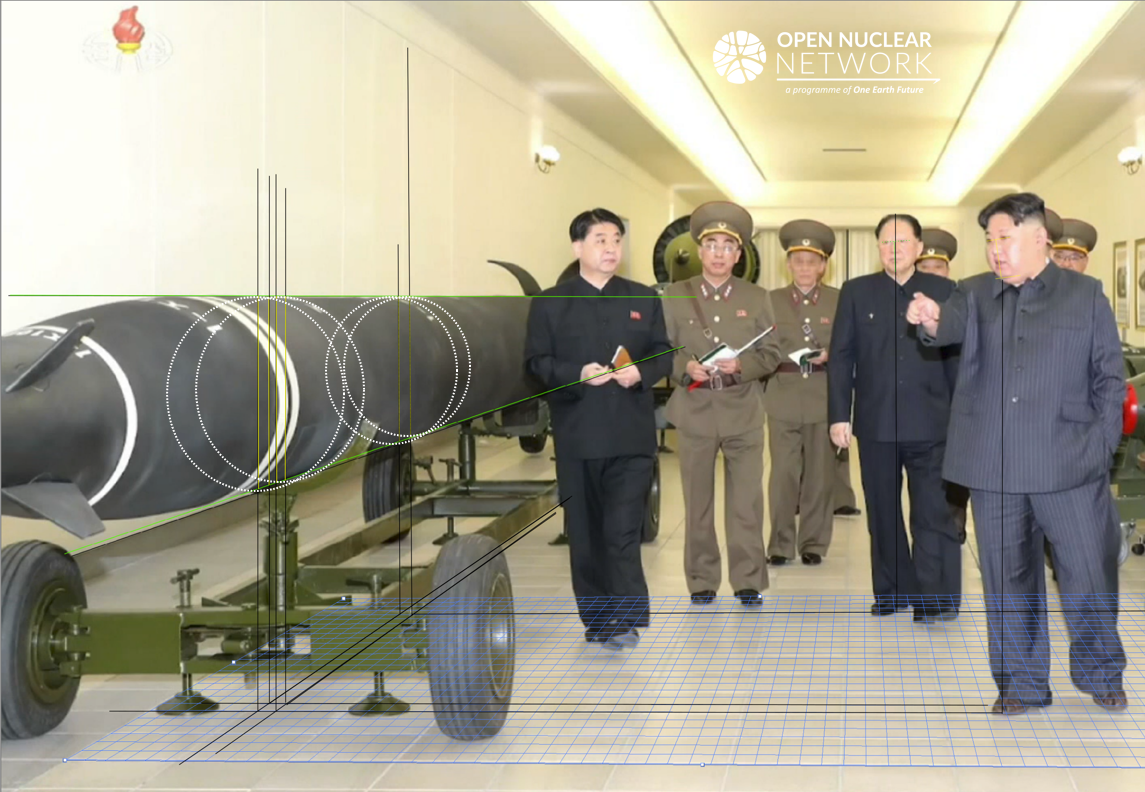
Figure 4. Using the 600 mm multiple rocket launcher round as reference, the face length of both Kim Jong Un and Hong Sung Mu have been measured for later use. Image: KCTV [17]
The result shows that the face length of Hong Sung Mu is roughly 122.4–126 mm long, which is in general alignment with a 2011 ROK study on facial anthropometrics (Figure 5).
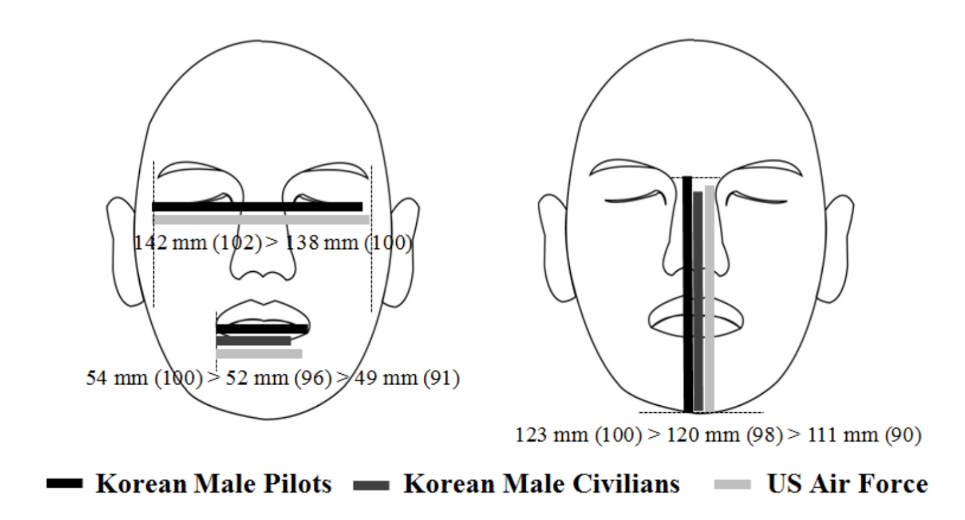
Using the face length of Hong as a reference, a rough measurement of the diameter of the implosion device showcased in March 2016 was made (Figure 6, measurement result see Table 2).
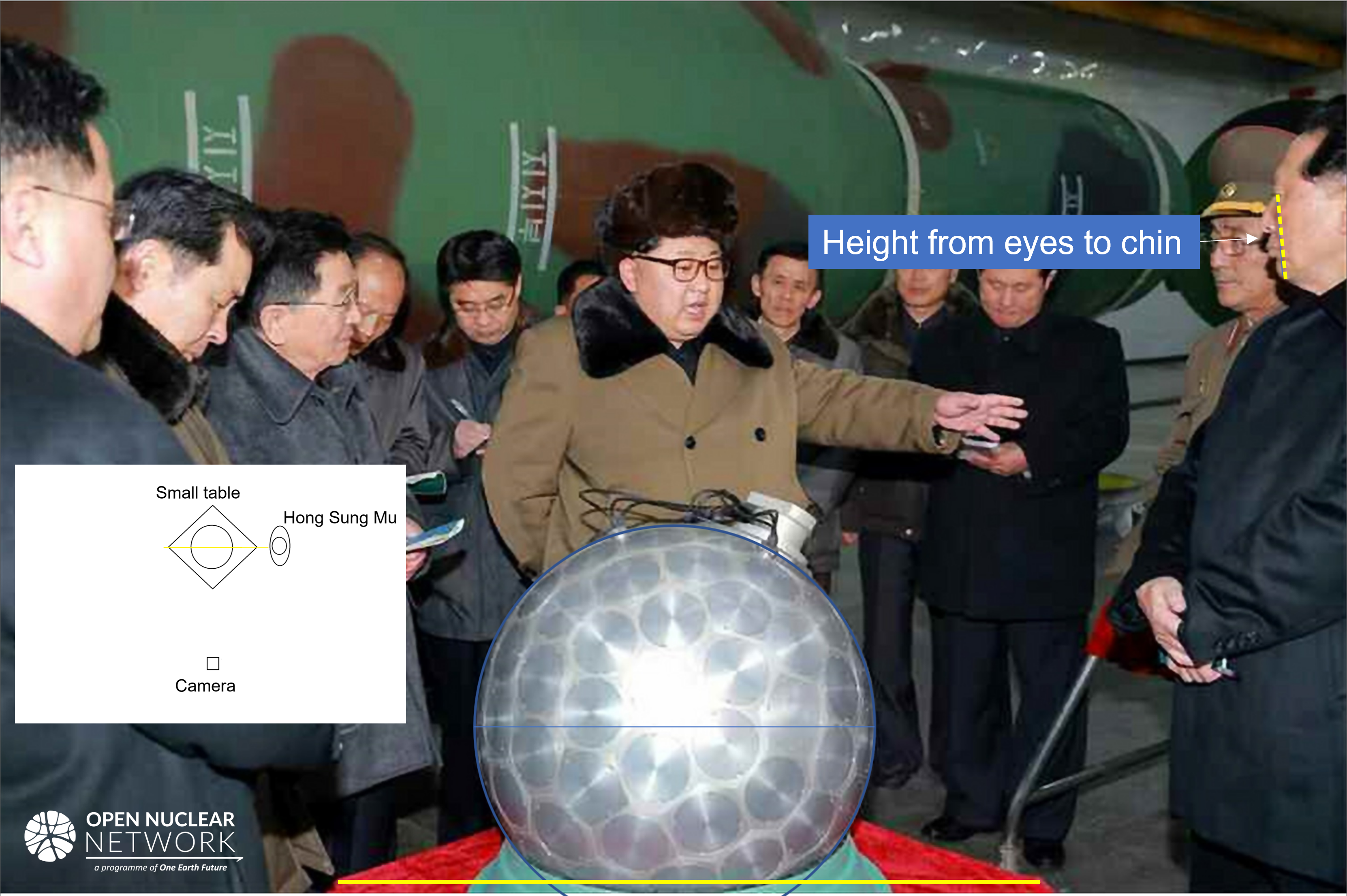
Measurement 2
According to the photos and videos released by the State media, the warhead showcased in 2016 was most certainly intended to be carried by the three-stage variant of the Hwasong-13 intercontinental ballistic missile. A blurred diagram showing the re-entry vehicle of the Hwasong-13 containing this warhead was also shown to Kim Jong Un. Thus, the second reference used for measuring the nuclear device is the base diameter of the re-entry vehicle.
The truck carrying the Hwasong-13 is used as the reference to measure the base diameter of the Hwasong-13's re-entry vehicle. According to the United Nations panel of experts, the Chinese WS51200 was the carrier truck of the Hwasong-13. [20] The vehicle is known to have a length of 20.11 m. [21] The missile could be measured as having a length of around 19.27 m (Figure 7), [22] and the base diameter of its re-entry vehicle is around 1.34 m. [23] In turn, the diameter of the implosion device in the diagram could be deduced (Figure 8, measurement result see Table 2).
The measurement results for the purported implosion device displayed in 2016 are shown in Table 2 below. The quality of references depends on how accurate and aligned the reference is for the purpose of measurement. The confidence level of the measurements depends on the quality of the references and whether the photo being worked on was taken with an angle favourable for the measurement.

3. Purported Two-Stage Thermonuclear Device (2017)
On the day of the DPRK's sixth nuclear test on 3 September 2017, the DPRK State media released photos of Kim Jong Un inspecting a purported two-stage thermonuclear device. [26] This is the second time Kim Jong Un conducted a publicly-reported inspection of nuclear weapons.
Measurements 1 to 3
None of the photos contains ideal objects for referencing, nor were they taken with ideal angles for measurement. Two photos taken from relatively useful angles were selected to measure the diameter of the primary and secondary of the purported two-stage thermonuclear device, using the measured face length of Hong Sung Mu and Kim Jong Un as reference (Figure 4, Figure 9, Figure 10 and Figure 11).

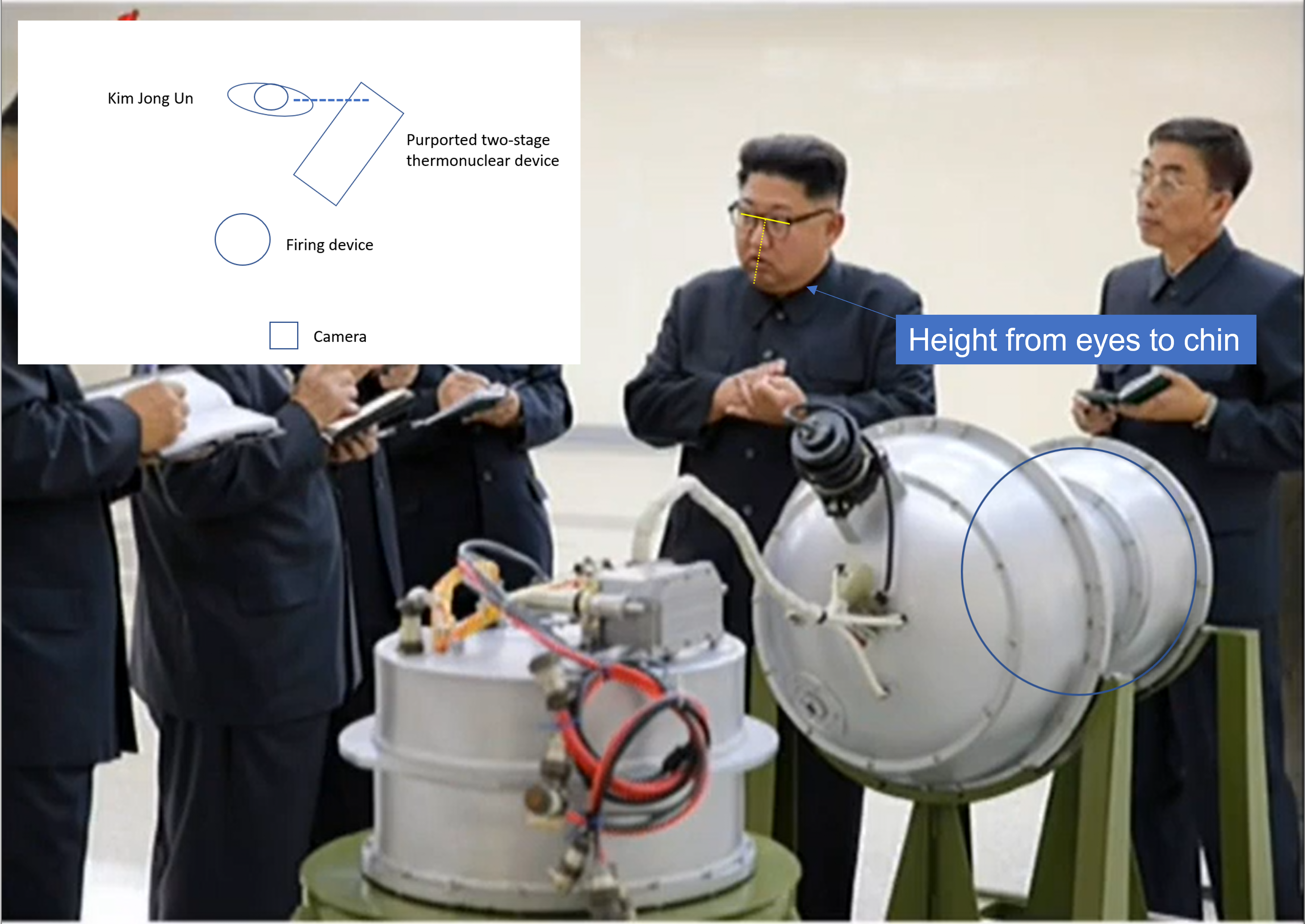
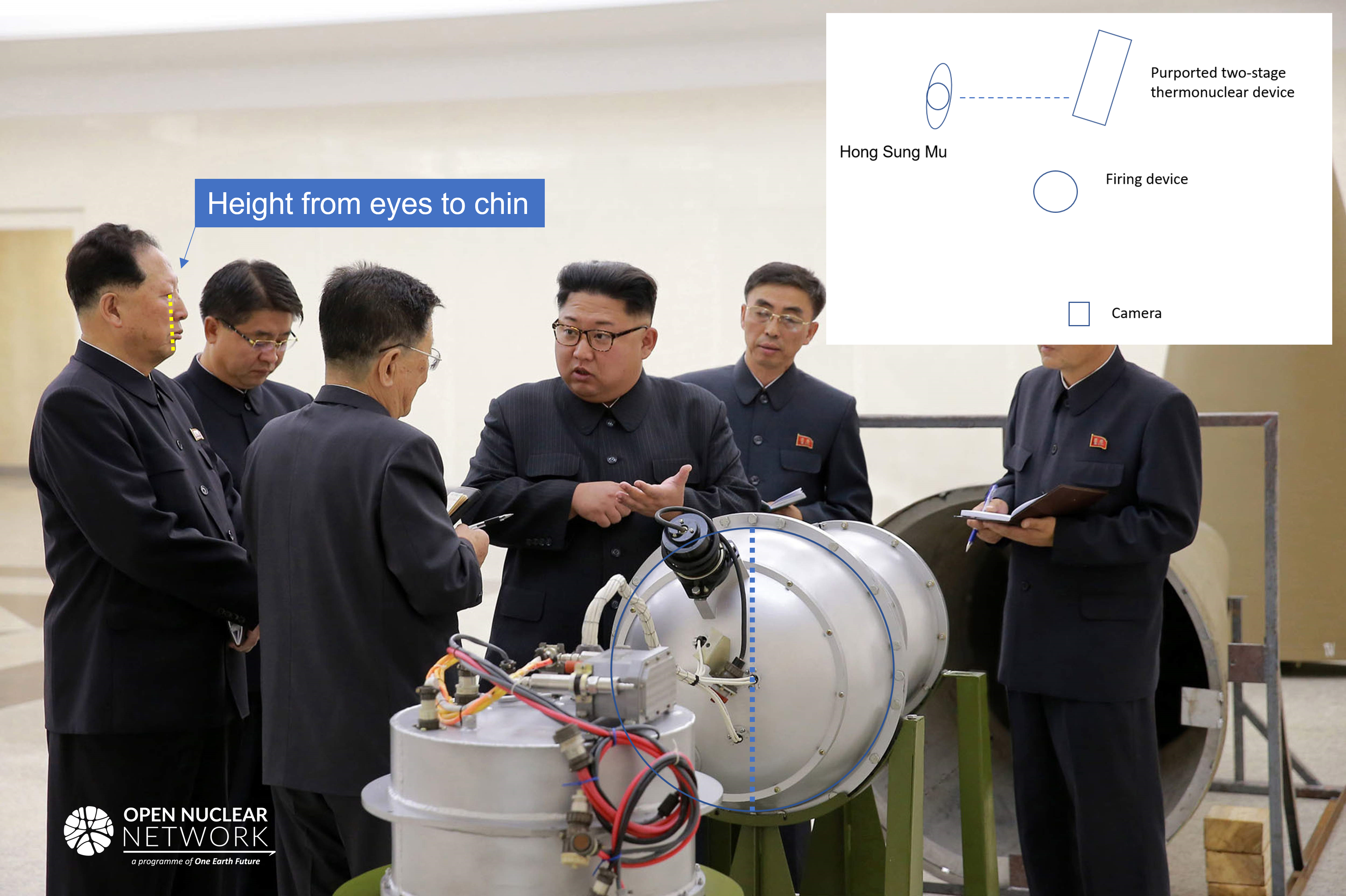
According to the diagram of a re-entry vehicle containing this two-stage thermonuclear device (Figure 12), the diameter of the secondary is roughly 75% of the diameter of the primary. Using this ratio, the diameter of the primary and secondary in the two images can also be deduced (Table 3).
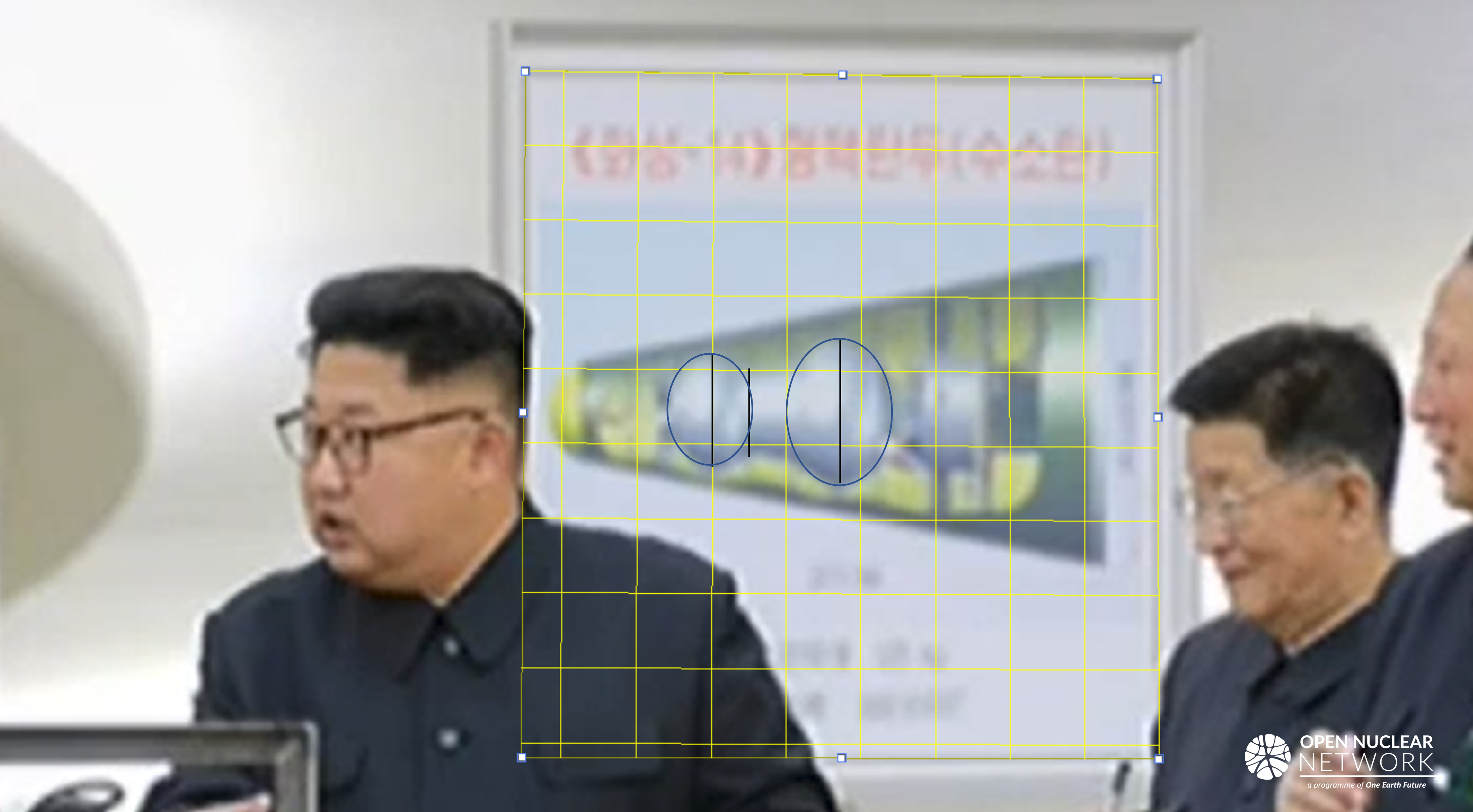
Measurement 4
On 10 September 2017, DPRK State media reported on a concert celebrating its sixth nuclear test. During the concert, several frames showing the assembly of the purported two-stage thermonuclear device were displayed (Figure 13). A rough estimate of the size of this device was also made using these frames. However, as the head breadth of the staff shown in the short clip is unknown, the measurement could be made only with the average head breadth of a ROK civilian (Figure 14, result see Table 3).
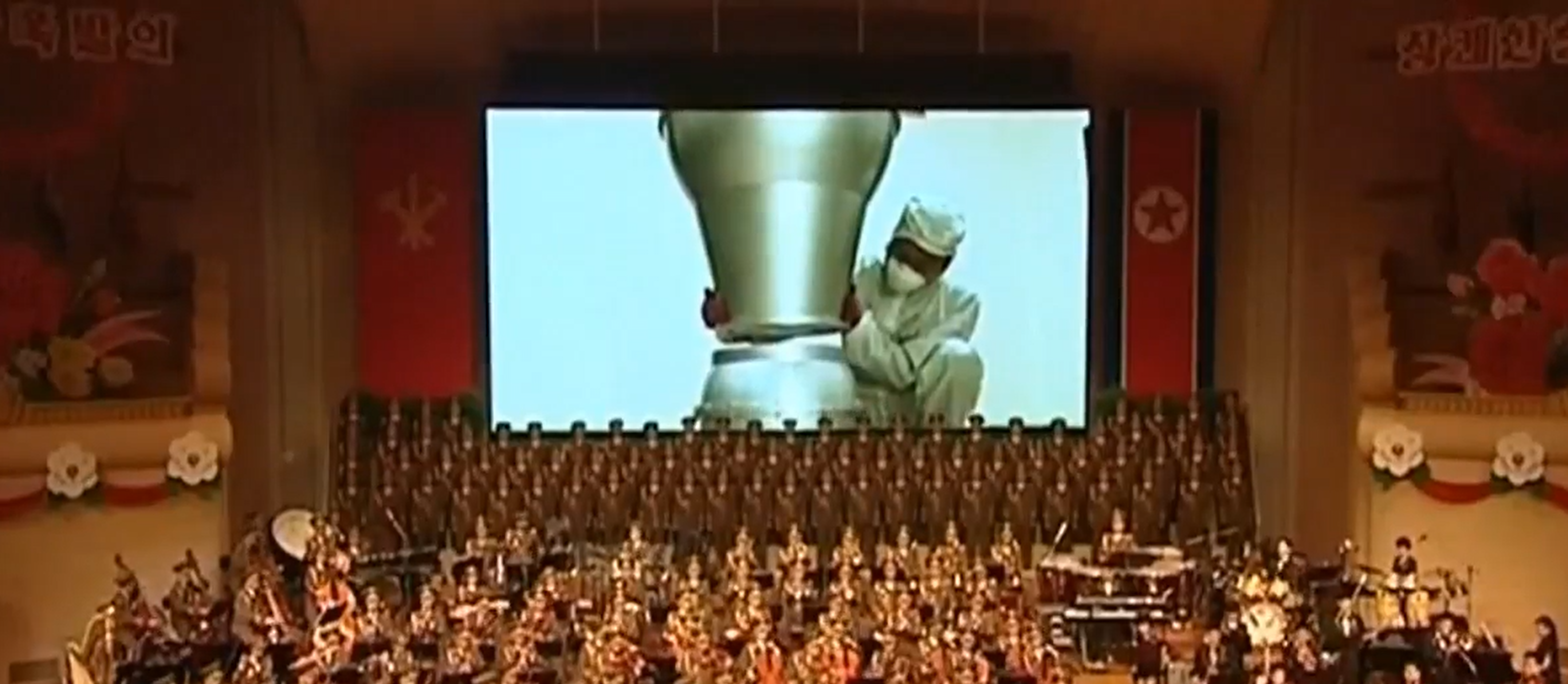
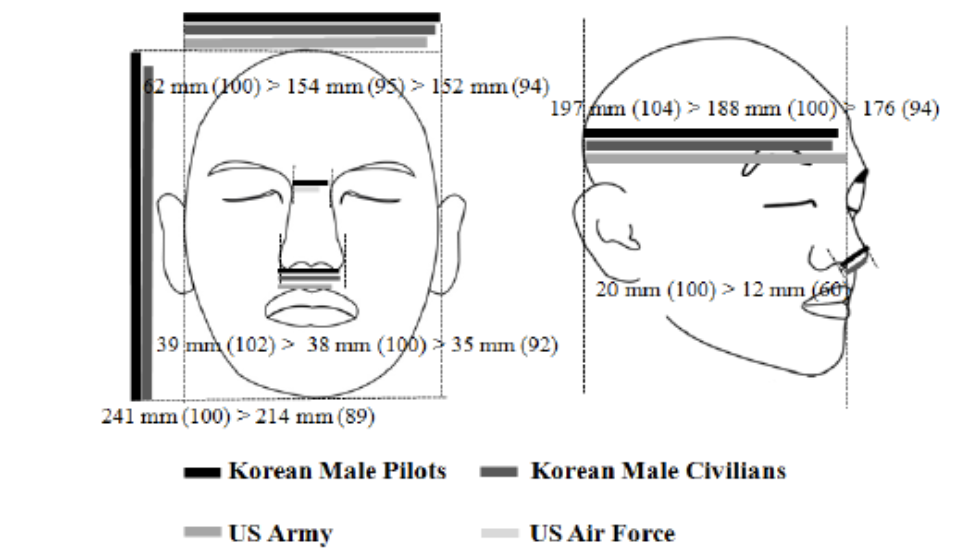
The measurement results of the purported two-stage thermonuclear device are shown in Table 3 below. The quality of references depends on how accurate and aligned the reference is for the purpose of measurement. The confidence level of the measurements depends on the quality of the references and whether the photo in question was taken from an angle favourable for the measurement.
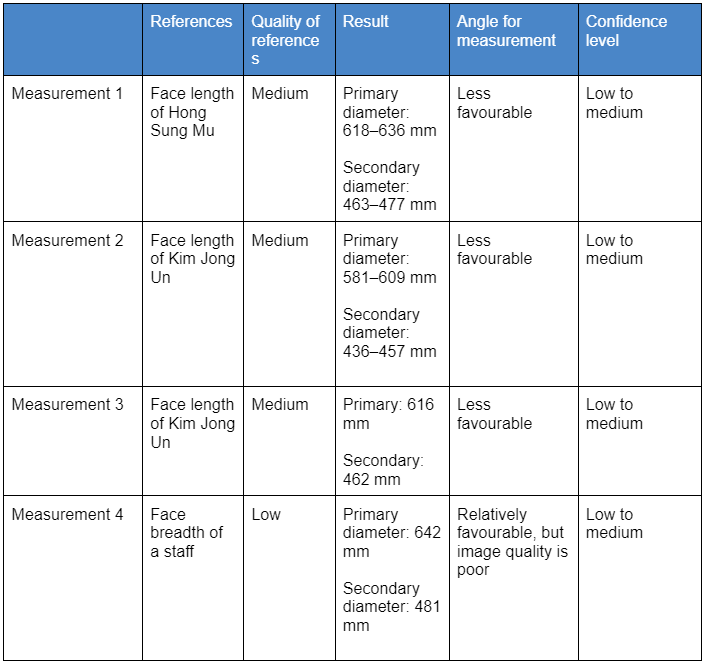
Considering that the time interval between the March 2016 and September 2017 inspections was relatively short, and that the two nuclear devices seem to have a similar firing device, it is possible that the primary of the two-stage thermonuclear device showcased in 2017 is similar to the implosion device showcased in 2016.
4. Hwasan-31 Nuclear Warhead (2023)
On 28 March 2023, DPRK State media reported on DPRK leader Kim Jong Un's 27 March 2023 inspection of nuclear weapons. A nuclear warhead referred to as the "Hwasan-31" was revealed during the inspection, and described as intended to be used in several nuclear delivery systems. The 27 March inspection is the third time for Kim Jong Un to conduct a publicly-reported inspection of nuclear weapons.
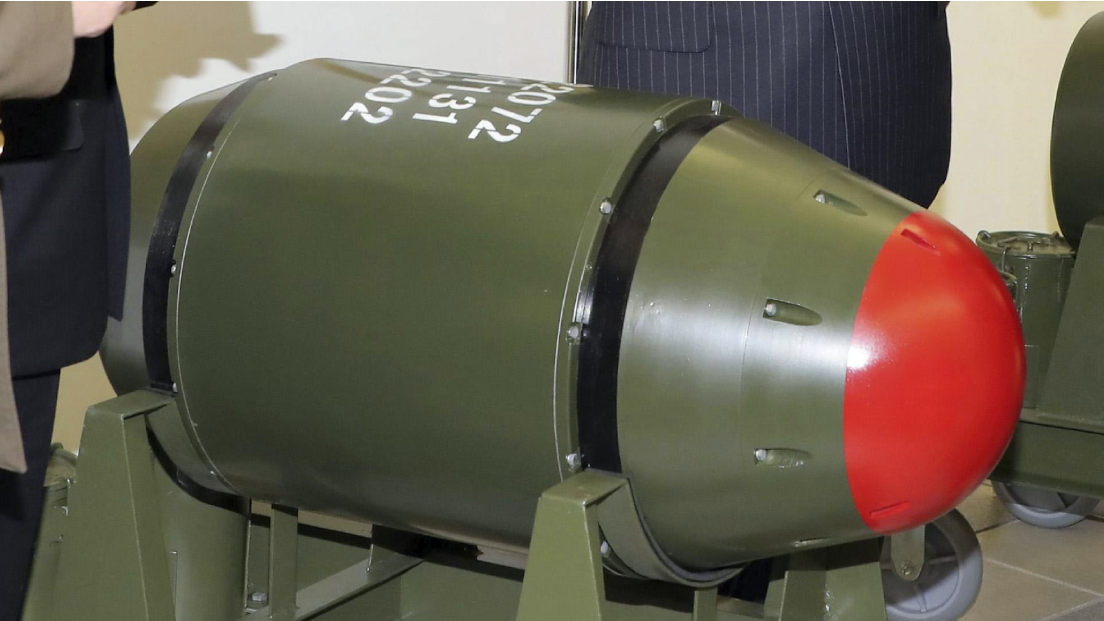
Measurement 1
Using the 600 mm diameter multiple rocket launcher (MRL) round as a reference, the maximum diameter of the casing of the Hwasan-31 nuclear warhead could be measured (Figure 16).
Measurement 2
Blurred diagrams of different weapon systems intended to carry the Hwasan-31 were also shown to Kim Jong Un during his visit. These diagrams do not illustrate the whole contour of the Hwasan-31 inside these weapons; nonetheless, measurements were made on diagrams of the 600 mm MRL round and a cruise missile to provide a rough range of the diameter of the Hwasan-31 (Figure 17).
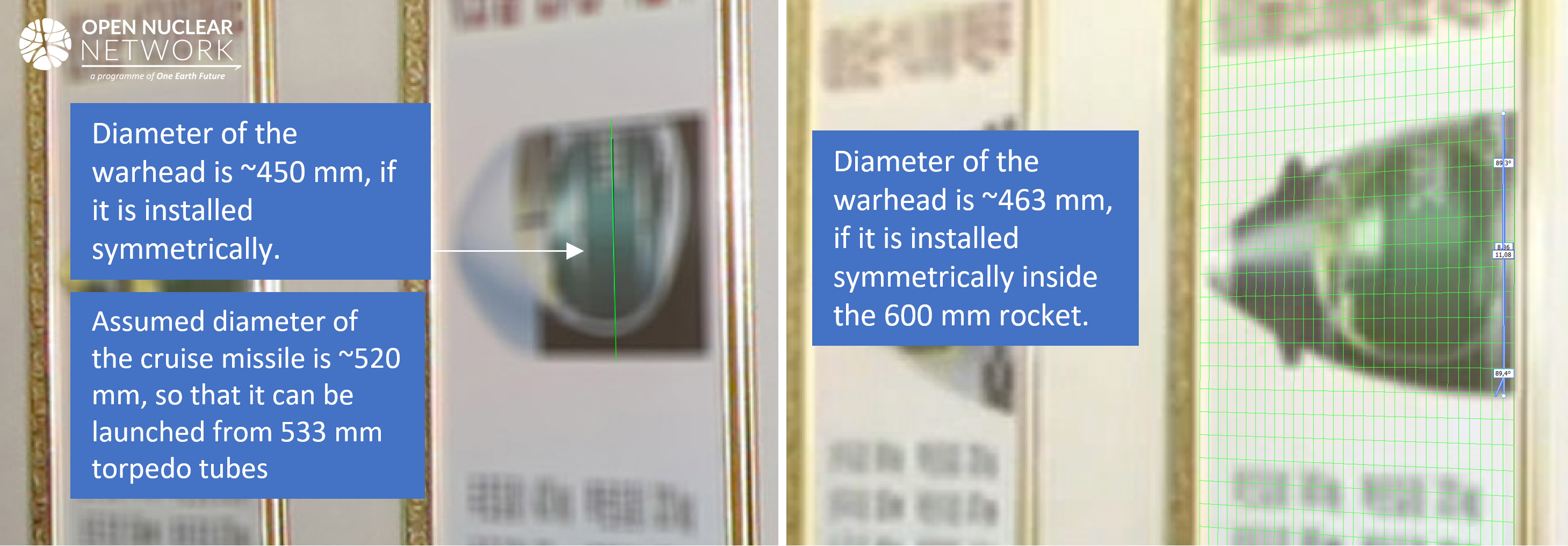
The measurements results are shown in Table 4 below. The quality of references depends on how accurate and aligned the reference is for the purpose of measurement. The confidence level of the measurements depends on the quality of the references and whether the photo in question was taken from a favourable angle for the measurement.
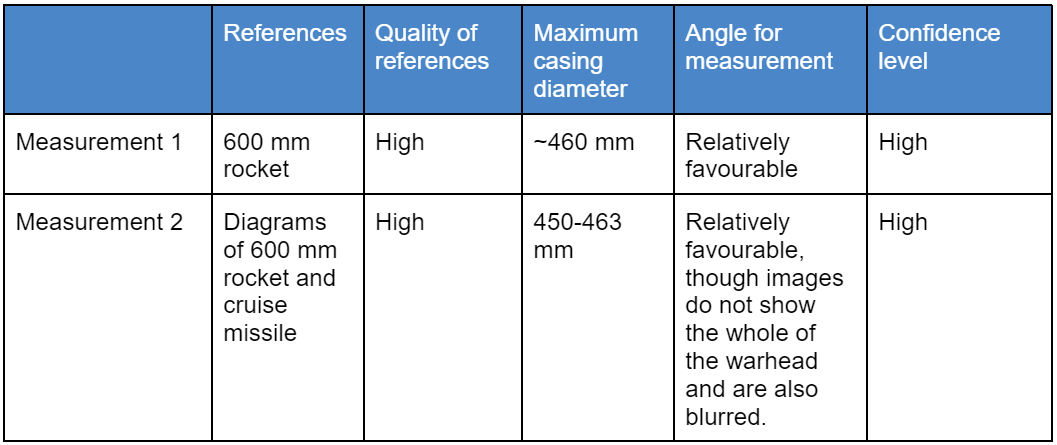
[1] Confidence level is defined by the quality of a reference used and how aligned the reference is positioned for the purpose of measurement in relation to the object being measured. For example, a good quality reference that is favourably aligned with the object being measured would yield a high confidence measurement; a medium quality reference that is favourably aligned with the object being measured would yield a medium to high confidence measurement; a medium quality reference that is less favourably aligned with the object being measured would result in a low to medium level measurement; and a rough reference that is less favourably aligned with the object being measured would yield a low confidence measurement.
[2] Tianran Xu, Backgrounder: Previous DPRK Nuclear Tests, Open Nuclear Network, 17 June 2022, available at: https://opennuclear.org/publication/backgrounder-previous-dprk-nuclear-tests-0
[3] North Korean Ballistic Missile Models, Nuclear Threat Initiative, 21 July 2015, available at: https://www.nti.org/analysis/articles/north-korean-ballistic-missile-models/
[4] 6th Enlarged Meeting of 8th Central Military Commission of WPK Held, KCNA, 11 April 2023, available at: http://kcna.kp/en/article/q/e087e06ef298d82aef6643aae6299c47.kcmsf
[5] Nuclear Counterattack Simulation Drill Conducted in DPRK, KCNA, 20 March 2023, available at: http://www.kcna.kp/en/article/q/34d6735ae393854a9d2e9b8f94b0fa59.kcmsf. Important Weapon Test and Firing Drill Conducted in DPRK, KCNA, 24 March 2023, available at: http://www.kcna.kp/en/article/q/8f6050fdcdec7876cc135c0378202bf2.kcmsf. Army Unit in Charge of Important Operation Task in Central Front Conducts Missile Firing Drill, KCNA, 28 March 2023, available at: http://www.kcna.kp/en/article/q/d7ccd96c7ee88f969f035d0f7b3edce5.kcmsf
[6] 中国军事百科全书 核武器分册 [Book of Nuclear Weapons, China Military Encyclopedia], p. 164, Military Science Publishing House, Beijing, 1990
[7] And, in advanced designs, a dial-a-yield function that could be realized by adjusting the amount of boosting gas inside a boosted fission device.
[8] Respected Comrade Kim Jong Un Guides Work for Mounting Nuclear Warheads on Ballistic Missiles, KCNA, 28 March 2023, available at: http://kcna.kp/en/article/q/a9ff9940b4b8dd920c378118854adfe8.kcmsf
[9] Alistair Coleman, North Korean TV appears to show early “A-bomb photo”, BBC, 13 December 2017, available at: https://www.bbc.com/news/world-asia-42339666
[10] Meeting of Victory and Glory That Will Go Down in History of Strengthening Self-Defensive National Defense Capabilities: the Eighth Munitions Industry Meeting Successfully Opens with Respected and Beloved Supreme Leader Comrade Kim Jong Un, KCTV, 13 December 2017, available at: https://www.youtube.com/watch?v=zPCT5bzk060&t=3s&ab_channel=supersuhui
[11] Meeting of Victory and Glory That Will Go Down in History of Strengthening Self-Defensive National Defense Capabilities: the Eighth Munitions Industry Meeting Successfully Opens with Respected and Beloved Supreme Leader Comrade Kim Jong Un, KCTV, 13 December 2017, available at: https://www.youtube.com/watch?v=zPCT5bzk060&t=3s&ab_channel=supersuhui
[12] Kim Jong Il was believed to be 1.60 m tall, and it is reported that in his late years (at least since 2009), he no longer wore high-heeled shoes in public out of health considerations. This article uses 1.65 m as his whole-body height taking consideration of hair length and height of shoe soles. See: Kim Sue-young, N. Korean Leader Kim Jong-il Chooses Sneakers Over High-Heeled Shoes, The Korea Times, 26 June 2009, available at: https://www.koreatimes.co.kr/www/nation/2022/05/113_47519.html
[13] Meeting of Victory and Glory That Will Go Down in History of Strengthening Self-Defensive National Defense Capabilities: the Eighth Munitions Industry Meeting Successfully Opens with Respected and Beloved Supreme Leader Comrade Kim Jong Un, KCTV, 13 December 2017, available at: https://www.youtube.com/watch?v=zPCT5bzk060&t=3s&ab_channel=supersuhui
[14] Kim Jong Il looking at things, 14 December 2012, Photo available at: https://kimjongillookingatthings.tumblr.com/post/37871190851/looking-at-beauty-products
[15] Tianran Xu, Backgrounder: Previous DPRK Nuclear Tests, ONN, 17 June 2022, available at: https://opennuclear.org/publication/backgrounder-previous-dprk-nuclear-tests
[16] Kim Jong Un Guides Work for Mounting Nuclear Warheads on Ballistic Rockets, KCNA, 9 March 2016, available at: https://kcnawatch.org/newstream/1546587782-675562795/kim-jong-un-guides-work-for-mounting-nuclear-warheads-on-ballistic-rockets/
[17] Respected Comrade Kim Jong Un Guides Work for Mounting Nuclear Warheads on Ballistic Missiles, KCNA, 28 March 2023, available at: http://kcna.kp/en/article/q/a9ff9940b4b8dd920c378118854adfe8.kcmsf
[18] Jeong Rim Jeong, Wonsup Lee, Jangwoon Park, Baekhee Lee, Eunjin Jeon, Donghoon Son, Seikwon Park, Daehan Jung, Hee-Eun Kim, and Heecheon You, Analysis of the Facial Anthropometric Data of Korean Pilots for Oxygen Mask Design, Conference paper, May 2011, available at: https://www.researchgate.net/publication/228749231_Analysis_of_the_Facial_Anthropometric_Data_of_Korean_Pilots_for_Oxygen_Mask_Design
[19] 북한 핵탄두와 KN-08 ICBM 격납고 내부 최초 공개 [North Korean nuclear warheads and interior of KN-08 ICBM hangar revealed for the first time], Chosun.com, 9 March 2016, available at: https://bemil.chosun.com/nbrd/bbs/view.html?b_bbs_id=10040&num=85782&pn=1&compn=7#none
[20] Panel of Expert report S/2013/337, United Nations, 11 June 2013, available at: https://undocs.org/Home/Mobile?FinalSymbol=S%2F2013%2F337&Language=E&DeviceType=Desktop&LangRequested=False
[21] Melissa Hanham, North Korea’s Procurement Network Strikes Again: Examining How Chinese Missile Hardware Ended Up in Pyongyang, Nuclear Threat Initiative, 30 July 2012, available at: https://www.nti.org/analysis/articles/north-koreas-procurement-network-strikes-again-examining-how-chinese-missile-hardware-ended-pyongyang/
[22] This measurement is in general alignment with results of other mensuration attempts, ranging from 19.07 to 19.39 m. See: Frank Pabian's SketchUp model of the KN-08 created in 2012 (same dimension, 19.27 m.), published by Jeffrey Lewis, Melissa Hanham and Amber Lee, "That Ain’t My Truck: Where North Korea Assembled Its Chinese Transporter-Erector-Launchers, 38North, February 3, 2014, available at: https://www.38north.org/2014/02/jlewis020314/#_ftn19. John Schilling, A Revised Assessment of the North Korean KN-08, Science and Global Security, Issue 21, 2013, available at: https://scienceandglobalsecurity.org/archive/sgs21schilling.pdf. Tal Inbar, Credible Threat? DPRK (North Korea) missile programs Technical Analysis and Global Implications, The Fisher Institute, 20 April 2016, available at: https://slideplayer.com/slide/10156471/. North Korean Ballistic Missile Models, Nuclear Threat Initiative, 21 July 2015, available at: https://www.nti.org/analysis/articles/north-korean-ballistic-missile-models/
[23] 1.33 m from another measurement by analyst Tal Inbar. See: Tal Inbar, Credible Threat? DPRK (North Korea) missile programs Technical Analysis and Global Implications, The Fisher Institute, 20 April 2016, available at: https://slideplayer.com/slide/10156471/
[24] Sam LaGrone, NORAD Chief: North Korea Has Ability to Reach U.S. With Nuclear Warhead on Mobile ICBM, US Navy Institute, 7 April 2015, available at: https://news.usni.org/2015/04/07/norad-chief-north-korea-has-ability-to-reach-u-s-with-nuclear-warhead-on-mobile-icbm
[25] Kim Jong Un looking at nuclear warheads, RogueStatesMedia, 2016, available at:
https://www.youtube.com/watch?v=0CsCx4fNdmk&t=9s&ab_channel=RogueStatesMedia
[26] Tianran Xu, Backgrounder: Previous DPRK Nuclear Tests, Open Nuclear Network, 17 June 2022, available at: https://opennuclear.org/publication/backgrounder-previous-dprk-nuclear-tests-0
[27] 문재인의 59문 59답…그가 유권자에게 묻고 싶은 것은? [Moon Jae-in's 59 questions and 59 answers... What does he want to ask voters?], Hani, 4 April 2017, available at: https://www.hani.co.kr/arti/politics/politics_general/789209.html
[28] Photo available at: https://i.dailymail.co.uk/i/newpix/2018/04/27/11/4B9BE09000000578-5662577-image-a-17_1524825116153.jpg
[29] 金正恩同志核兵器兵器化事業を現地指導 [Kim Jong Un gives guidance on weaponization of nuclear weapons], DPRKnow, September 2017, available at: https://www.youtube.com/watch?v=XWTSLuGpKMc&ab_channel=dprknow
[30] Photo available at: https://cnnespanol.cnn.com/wp-content/uploads/2017/09/170903060204-bt105-north-korea-kim-jong-un-0903-recrop.jpg?quality=100&strip=info
[31] 金正恩同志核兵器兵器化事業を現地指導 [Kim Jong Un gives guidance on weaponization of nuclear weapons], DPRKnow, September 2017, available at: https://www.youtube.com/watch?v=XWTSLuGpKMc&ab_channel=dprknow
[32] N. Korea unveils footage showing scientists assembling hydrogen bomb, Arirang News, 2017, available at: https://www.youtube.com/watch?v=x92ww8zYnlA&ab_channel=ArirangNews
[33] Jeong Rim Jeong, Wonsup Lee, Jangwoon Park, Baekhee Lee, Eunjin Jeon, Donghoon Son, Seikwon Park, Daehan Jung, Hee-Eun Kim, and Heecheon You, Analysis of the Facial Anthropometric Data of Korean Pilots for Oxygen Mask Design, Conference paper, May 2011, available at: https://www.researchgate.net/publication/228749231_Analysis_of_the_Facial_Anthropometric_Data_of_Korean_Pilots_for_Oxygen_Mask_Design
[34] Respected Comrade Kim Jong Un Guides Work for Mounting Nuclear Warheads on Ballistic Missiles, KCNA, 28 March 2028, available at: http://kcna.kp/en/article/q/a9ff9940b4b8dd920c378118854adfe8.kcmsf
[35] Respected Comrade Kim Jong Un Guides Work for Mounting Nuclear Warheads on Ballistic Missiles, KCNA, 28 March 2028, available at: http://kcna.kp/en/article/q/a9ff9940b4b8dd920c378118854adfe8.kcmsf
[36] 敬愛する金正恩同志が核武器兵器化事業を指導された [Respected comrade Kim Jong Un guides weaponization of nuclear weapons], DPRKnow, 28 March 2023, available at: https://www.youtube.com/watch?v=Mh3jV4yORdU&t=177s&ab_channel=dprknow
[37] The DPRK has reportedly launched cruise missiles from submarines. Submarine-launched torpedoes with 533 mm caliber are the most commonly used in the world. The DPRK is known to operate 533 mm torpedoes on its Chinese Type 033 (Romeo) class submarines and locally built small and midget submarines. The ROK also alleged that a DPRK-made 533 mm torpedo fired by a DPRK midget submarine sank the ROK corvette Cheonan in 2010. See: Joint Investigative Report - On the Attack against ROK Ship Cheonan, ROK Ministry of National Defense, September 2010, available at: http://nautilus.org/wp-content/uploads/2012/01/Cheonan.pdf. The cruise missile should have a diameter smaller than 533 mm as it possibly needs a canister for its brief travel underwater. This article assumes the DPRK cruise missile has a diameter of around 520 mm, similar to that of the US Tomahawk cruise missile, which can be launched from 533 mm torpedo tubes. See: Carlo Kopp, Tomahawk Cruise Missile Variants, Air Power Australia, 27 January 2014, available at: https://www.ausairpower.net/Tomahawk-Subtypes.html
[38] 敬愛する金正恩同志が核武器兵器化事業を指導された [Respected comrade Kim Jong Un guides weaponization of nuclear weapons], DPRKnow, 28 March 2023, available at: https://www.youtube.com/watch?v=Mh3jV4yORdU&t=177s&ab_channel=dprknow